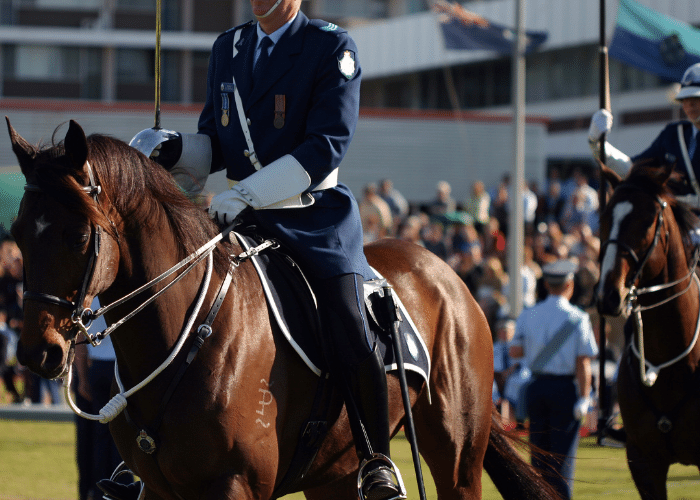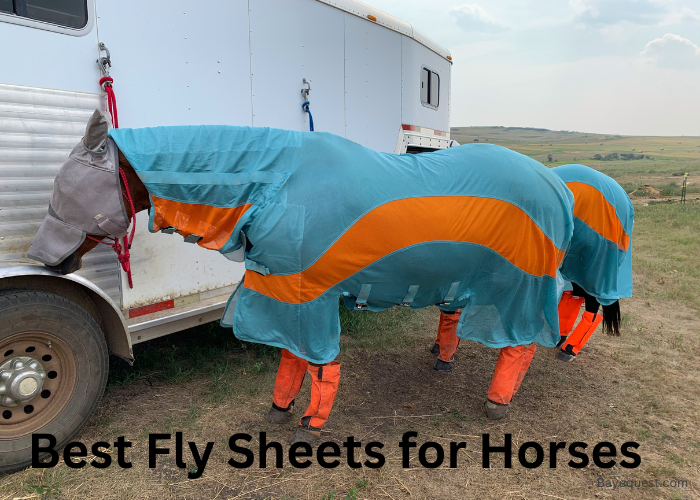Who are these equine officers? Not just any breed can wear the badge. It takes a special mix of bravery, strength, and gentleness.
From the quick-footed American Quarter Horse to the imposing Dutch Warmblood, these breeds form the elite cadre of the police force on hooves.
This blog peels back the curtain on these remarkable animals. Discover the qualities that make a great police horse, the rigorous training they undergo, and the profound bond they form with their human partners.
Step into the world of police horse breeds. It’s a story of grace amidst chaos, tradition meeting modernity, and the enduring partnership between horse and human.
Let’s embark on this fascinating journey together. Welcome to the beat of the city, as you’ve never heard it before.
Horse Breeds that Police Use
- Clydesdale
- Percheron
- Irish Draft
- Thoroughbred
- Belgian Draft
- Dutch Warmblood
- American Quarter Horse
- Tennessee Walker
- American Paint
- Hanoverian
- Morgan
- Mustang
- Spotted Saddle Horse
Police Horse History
Police horses have a story that echoes through the streets of history. Let’s trot through the past to see how these noble animals became heroes in uniform.
Long ago, before cars and radios, horses were the speed and communication of law enforcement. In the early 1800s, London introduced the first formal police horse unit. This idea galloped across oceans to cities worldwide.
In America, the mid-19th century saw horses becoming the backbone of the police force. New York City, in 1871, officially added mounted officers to patrol the bustling streets.
These horses weren’t just transport; they were partners. They faced riots, chased criminals, and navigated the chaos of early urban life. Their presence could calm a crowd or chase down trouble.
As cars took over, many thought police horses would fade into history. But they didn’t. Instead, they adapted.
Today, they serve in specialized roles, from crowd control to public relations, showcasing their timeless value.
Police horses remind us of our connection to nature and the enduring bond between human and animal. They’re a living link to our past and a vital part of our present law enforcement community.
Uses of Police Horses
Police horses are more than just a pretty face in a uniform. They’re hardworking members of the police force with a wide range of duties.
Here’s what these magnificent animals do:
Crowd control. With their size and presence, police horses help manage large crowds. They make paths and keep order, all with calm authority.
Riot control. In tense situations, horses serve as a peaceful barrier. They can stand firm, helping to de-escalate conflicts without a word.
Desensitization. Police horses train to stay cool in chaos. Loud noises, sudden movements, they handle it all. This keeps them and everyone else safe.
Obstacle training. Life in the city is full of surprises. Horses learn to navigate through tight spots, over objects, and around any urban jungle.
Basic obedience. Like any good officer, police horses follow commands. Their training ensures they respond promptly and correctly.
Traffic training. Navigating roads alongside cars and bikes is a skill. Police horses learn to do it with ease, ensuring everyone’s safety.
Fitness and conditioning. A fit horse is a happy, effective worker. Regular exercise keeps them in top shape for their demanding job.
Search and rescue. When the terrain gets tough, police horses step in. They can cover ground where vehicles can’t, finding lost or hidden people.
13 Common Police Horse Breeds
1. Clydesdale
The Clydesdale, known for its large size and feathered feet, originates from Scotland. They are gentle giants, calm and friendly.
Clydesdales are big, often over 17 hands tall, with bay, black, or chestnut coats. Police use them for ceremonial duties because of their impressive appearance. They stand out in a crowd.
Interesting read: Are Clydesdales Good Riding Horses?
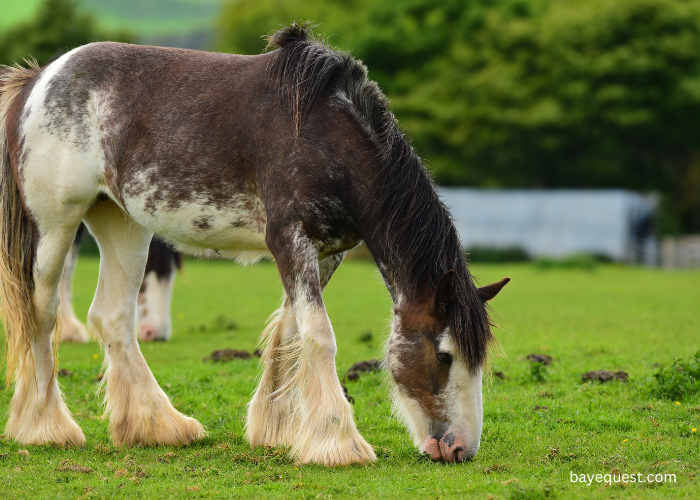
2. Percheron
Percheron horses come from France. They are strong and graceful, with a calm temperament.
These horses are large, usually gray or black, and can adapt to many tasks. Police like them for crowd control because they are unflappable and powerful.
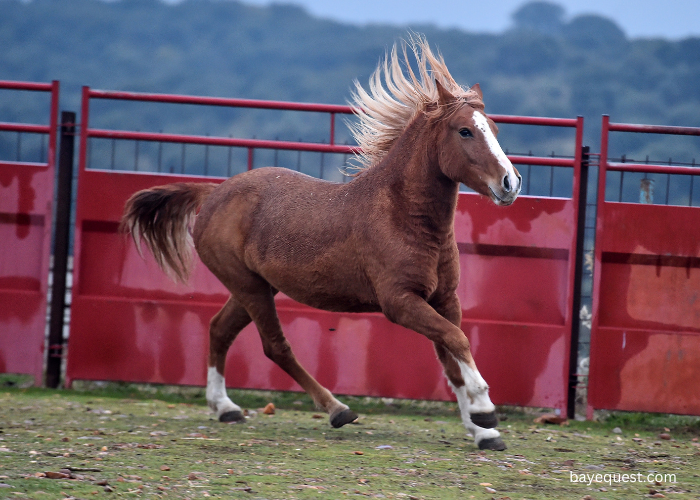
3. Irish Draft
The Irish Draft is from Ireland. It’s known for its good nature and strength. These horses are versatile, making them suitable for various police roles.
They have a solid build and are usually gray, bay, or chestnut. Their calm demeanor makes them great for community policing.
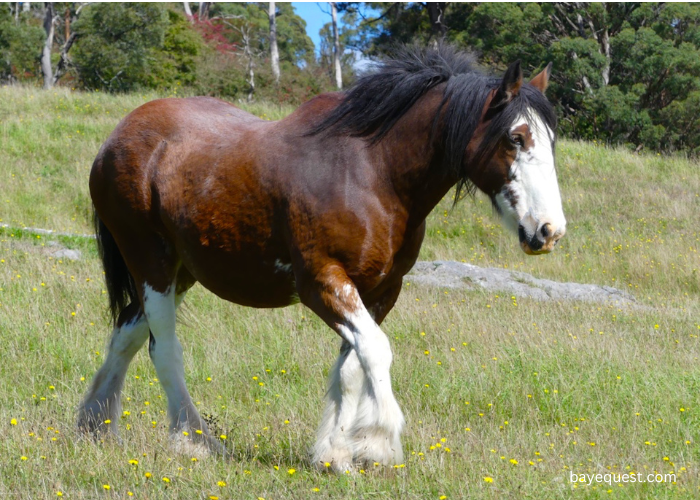
4. Thoroughbred
Thoroughbreds are fast and athletic, originating from England. They are spirited but trainable.
Thoroughbreds are sleek and tall, often bay, gray, or chestnut. Police use them for patrol because of their speed and endurance. They cover ground quickly.
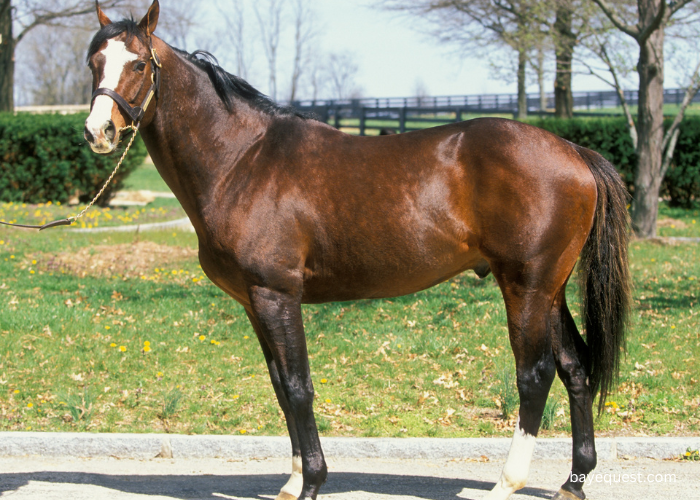
5. Belgian Draft
Belgian Draft horses are from Belgium. They are among the strongest horse breeds, gentle and willing to work.
These horses are massive, with chestnut coats and flaxen manes. Police use them for heavy-duty tasks and ceremonies. Their size commands respect.
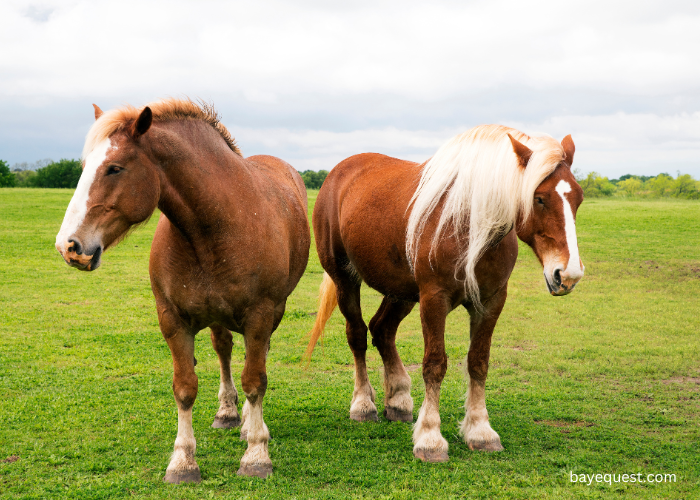
6. Dutch Warmblood
The Dutch Warmblood, from the Netherlands, is known for its agility and intelligence. They are elegant and perform well under pressure.
These horses are usually bay, gray, or chestnut. Police use them for a variety of tasks, including patrol and crowd control. They adapt well to different situations.
Also, find out other breeds of warmblood horses.
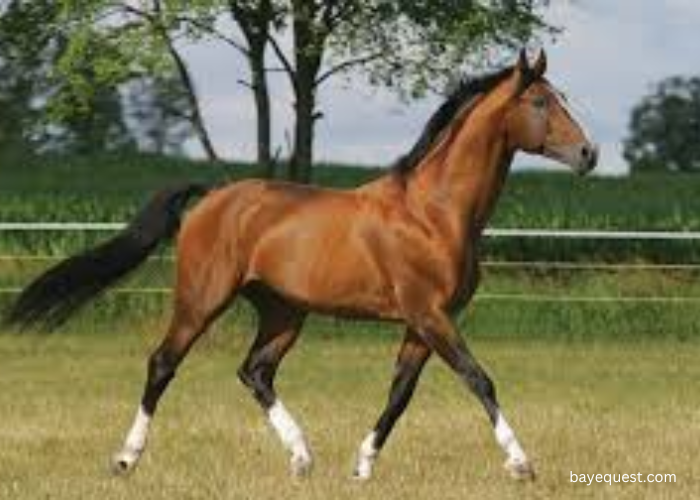
7. American Quarter Horse
American Quarter Horses are from the USA. They are fast and agile, with a calm temperament.
These horses are compact and muscular, often in sorrel or bay. Police use them for patrol in tight spaces because they are quick and maneuverable.
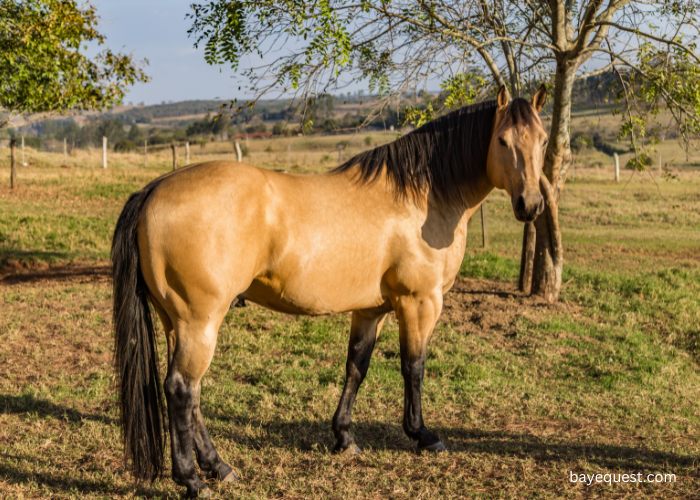
8. Tennessee Walker
The Tennessee Walking Horse is a native of the USA, known for its smooth gait and friendly nature. It is tall and elegant, often black, bay, or chestnut.
Police use them for patrol, especially in areas requiring long periods of riding. They provide a comfortable ride.
Read also: How Much Does a Tennessee Walking Horse Cost?
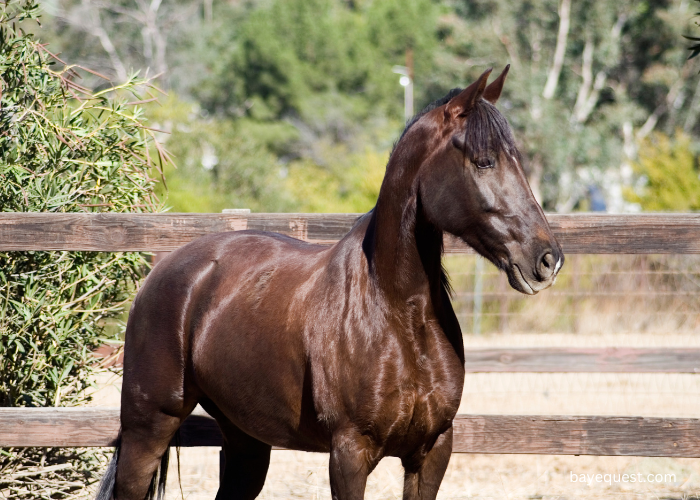
9. American Paint Horse
American Paint horses are colorful and eye-catching, with a good-natured temperament. They come from the USA.
These horses are stocky and muscular, with unique coat patterns. Police use them for community events because they attract positive attention.
Related read: How much does a Paint Horse cost?
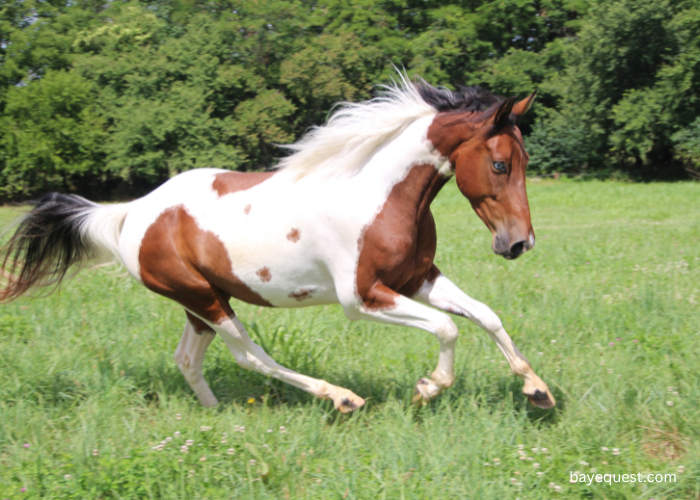
10. Hanoverian
Hanoverians, from Germany, are strong and elegant. They excel in many tasks, thanks to their intelligence and willingness.
These horses are usually bay, gray, or chestnut. Police use them for patrol and ceremonial duties. They are reliable and versatile.
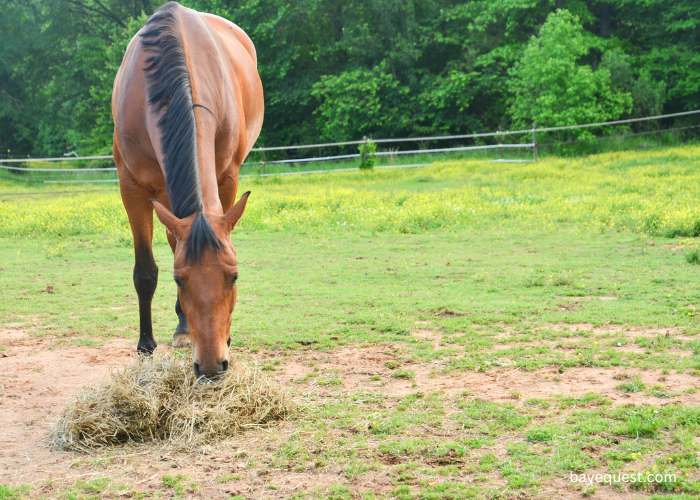
11. Morgan
Morgan horses are from the USA. They are known for their endurance and friendly personality.
These horses are compact and sturdy, often bay, black, or chestnut. Police use them for patrol because they are hardworking and versatile.
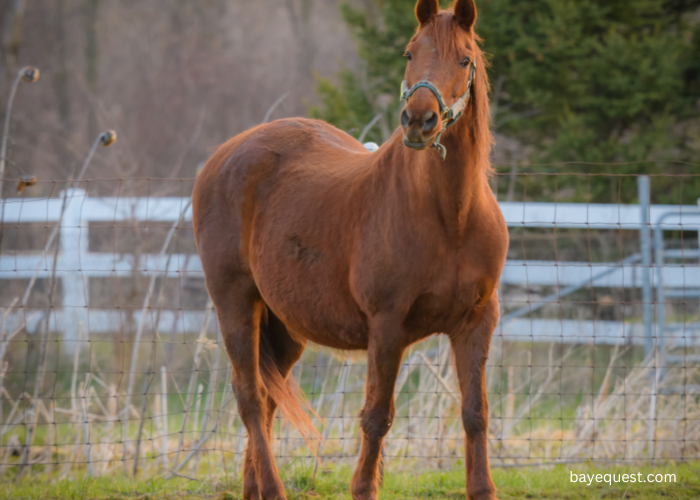
12. Mustang
Mustangs are wild horses from the USA, known for their toughness and independence. They are smaller and hardy, with various colors.
Police use them for patrol in rugged terrains because they are durable and sure-footed.
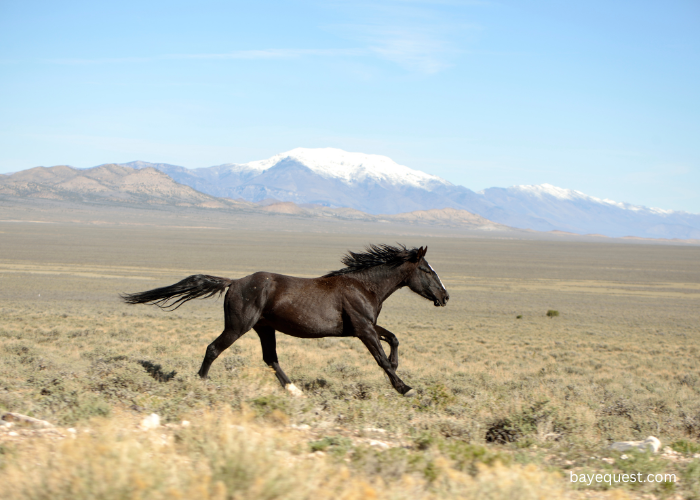
13. Spotted Saddle Horse
Spotted Saddle Horses, from the USA, are known for their smooth gaits and colorful coats. They are friendly and calm. These horses are medium-sized, with distinctive spotted patterns.
Police use them for community policing and parades because they stand out and are easy to ride.
Read also: Breeds of Spotted Horses.
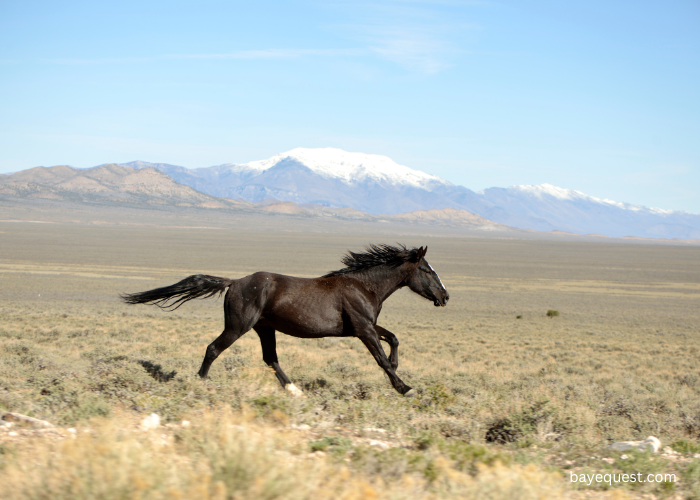
What Makes a Police Horse?
What turns a horse into a trusted police partner? It’s not just about wearing a badge. Here’s what makes them stand out:
Size and strength. Big and strong, they can handle the physical demands of their job. They stand tall in crowds, making them visible and imposing when needed.
Temperament and trainability. Calm yet alert, they must deal with chaos without getting spooked. Easy to train, they quickly learn and follow commands.
Endurance and stamina. Long shifts are no problem. They patrol for hours, covering large areas without tiring easily.
Versatility. Whether it’s a busy city street or a rugged trail, they adapt. Different tasks, different days, they handle it all.
Intelligence and sensitivity. Smart and intuitive, they sense emotions and react accordingly. This helps in tense situations, calming both officers and civilians.
Health and fitness. Just like human officers, they need to be in top shape. Healthy and fit, they’re ready for action at any moment.
Age and gender. Experience counts. Mature, yet not too old, they bring the right balance of energy and wisdom. Both males and females serve, depending on their suitability.
Well-mannered and trustworthy. Reliable partners, their behavior is impeccable. Officers trust them, as do the people they help and protect.
How are Police Horses Trained?
Training a police horse is a meticulous and comprehensive process, blending discipline with sensitivity. All these is done to prepare these animals for the multifaceted demands of police work.
Here’s an overview of how police horses are trained:
Selection. It starts with choosing the right horse. Potential police horses are selected based on their temperament, health, and physical ability. They should be calm, intelligent, and physically capable of handling the rigors of police work.
Basic training. Before they can patrol the streets, horses undergo basic training. This includes getting used to being saddled, bridled, and ridden. They learn to respond to basic commands such as start, stop, and turn.
Desensitization. Police horses are exposed to a wide range of sights, sounds, and situations they might encounter on duty. This includes loud noises, flashing lights, and unexpected events (umbrellas opening, flags waving). The goal is to ensure they remain calm and composed no matter what.
Crowd control. Horses learn to navigate through crowds, maintain order, and use their bodies to create barriers or guide people. This training is essential for their role in managing public events and demonstrations.
Traffic training. Horses are trained to be comfortable around moving vehicles and understand traffic signals. They learn to cross roads safely and deal with the unpredictability of urban environments.
Physical conditioning. A police horse must be in excellent physical condition. Their training regimen includes exercises to build strength, stamina, and agility. This ensures they can handle long hours on patrol without fatigue.
Obstacle training. To prepare for any physical challenges on duty, horses are trained to tackle obstacles. This might include jumping over barriers, moving through tight spaces, or dealing with uneven terrain.
Bonding and trust. A key part of training is building a strong bond between the horse and its handler. Trust is fundamental. Horses must trust their riders to guide them safely, and handlers must trust their horses to follow commands.
Continuous training. Training for police horses doesn’t end with their initial preparation. They undergo continuous training to maintain their skills, adapt to new challenges, and ensure they’re always ready for duty.
How Long Does it Take to Train a Police Horse?
Training a police horse is a comprehensive process, taking between six months to a year. However, the exact duration can vary depending on several factors:
- The horse’s age and experience. Younger horses or those with little prior training may take longer to prepare for police work. In contrast, horses with a solid foundation in basic obedience and handling might progress more quickly.
- The horse’s temperament. Horses with a calm, adaptable temperament generally learn faster. Those that are more skittish or independent might require extra time to adjust to the demands of police work.
- The intensity of the training program. Programs that offer daily, immersive training sessions can accelerate a horse’s readiness. Less frequent training might extend the preparation time.
- Specific roles and duties. Horses trained for specialized roles, such as search and rescue or riot control, might undergo additional training beyond the basics. This specialized training can add to the overall time required.
Even after completing their initial training, police horses continue to receive ongoing training and assessment to maintain their skills.
Mounted Police Officer Training
Mounted police officer training is specialized and detailed. It starts with learning how to ride a horse.
Officers learn to get on and off, steer, and control the horse at different speeds. They also learn about taking care of the horse, like grooming and feeding. This helps officers and horses build a trusting relationship.
The training then moves to more advanced skills. Officers learn to handle the horse in crowded places, chase suspects, and control crowds.
They also practice staying calm around loud noises and chaos. This is to make sure the horse and officer can work well under stress.
Officers also study police work beyond riding. This includes laws about arrests, traffic, and using force.
They learn first aid to help themselves or their horses if needed. Communicating well with people is another key part of training. Mounted officers often talk to the community, helping to improve trust in the police.
Being fit is important for mounted officers. They need strength and stamina for their job.
Training never really stops. Officers keep learning and improving their skills. This ensures they can do their job well and keep the community safe.
FAQs
Are police horses still used today?
Yes, police horses are still used today. Despite advancements in technology and transportation, these equine officers continue to play a vital role in law enforcement around the world.
What happens to retired police horses?
When police horses retire, they often go to live in sanctuaries or with private families. These places provide them with a peaceful environment to enjoy their retirement. The goal is to ensure they have a comfortable life after years of service. Some police departments have adoption programs for retired horses.
What is a police horse called?
A police horse is referred to as a “mounted police horse” or simply a “police horse.” These terms describe horses trained for law enforcement duties, including crowd control and patrolling areas inaccessible by vehicle.
Are police horses considered officers?
While police horses are not ranked as officers, they are considered valuable members of the police force. In many departments, they are given the same respect and honor as their human counterparts. Some horses even receive badges or ceremonial honors that acknowledge their contributions.
Conclusion
In the world of law enforcement, these horse breeds stand out as true heroes. From the towering Clydesdale to the agile American Quarter Horse, each breed brings its own unique strengths to the force.
Whether patrolling busy streets or controlling crowds, their presence is unmatched. Their roles go beyond duty; they connect us to nature and history. They’re not just horses; they’re partners, protectors, and friends.
Next time you see a police horse, remember their story. They’re more than meets the eye. These magnificent animals remind us of the bond between humans and horses.
A bond that’s strong, loyal, and truly extraordinary.




